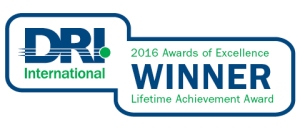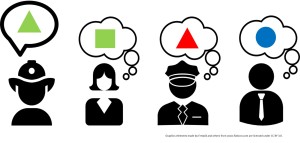 Acceptance speech by Brian Miller on the occasion of receiving the Lifetime Achievement Award presented by DRI International on March 8, 2016
Acceptance speech by Brian Miller on the occasion of receiving the Lifetime Achievement Award presented by DRI International on March 8, 2016
Friends, colleagues and conference delegates; as I stand here before you this evening, I feel somewhat uneasy because I know of many others who are also deserving of this award. Congratulations to all the nominees; the nomination itself is an important recognition of a significant contribution to our profession. I wish to thank the people in Canada, United States and other countries who took the time to cast a vote for any of the candidates.
It is indeed a great honour to be recommended and selected by my peers and it is many of those same people to whom I owe such gratitude for supporting me through the times when difficult decisions were made and significant risks taken to ens ure and augment our profession.
ure and augment our profession.
My career in business continuity and emergency management has been enhanced by my involvement in DRI CANADA, DRI International, the Disaster Recovery Information Exchange and the Canadian Centre for Emergency Preparedness. While I contributed to these organizations in leadership roles, they gave back so much more than I put in. It is like having a bank account that pays 125% interest on deposits.
The words “lifetime achievement” sound like it is the end of a great period but there remains much more to come! I am looking forward to achieving many more milestones in our profession and I ask you to join me on the rest of the journey. I am appealing to you to seek opportunities to volunteer within our profession, it is only through selfless dedication that we can all move forward. Teddy Roosevelt said it best: Far and away, the best prize in life is the chance to work hard at work worth doing.






